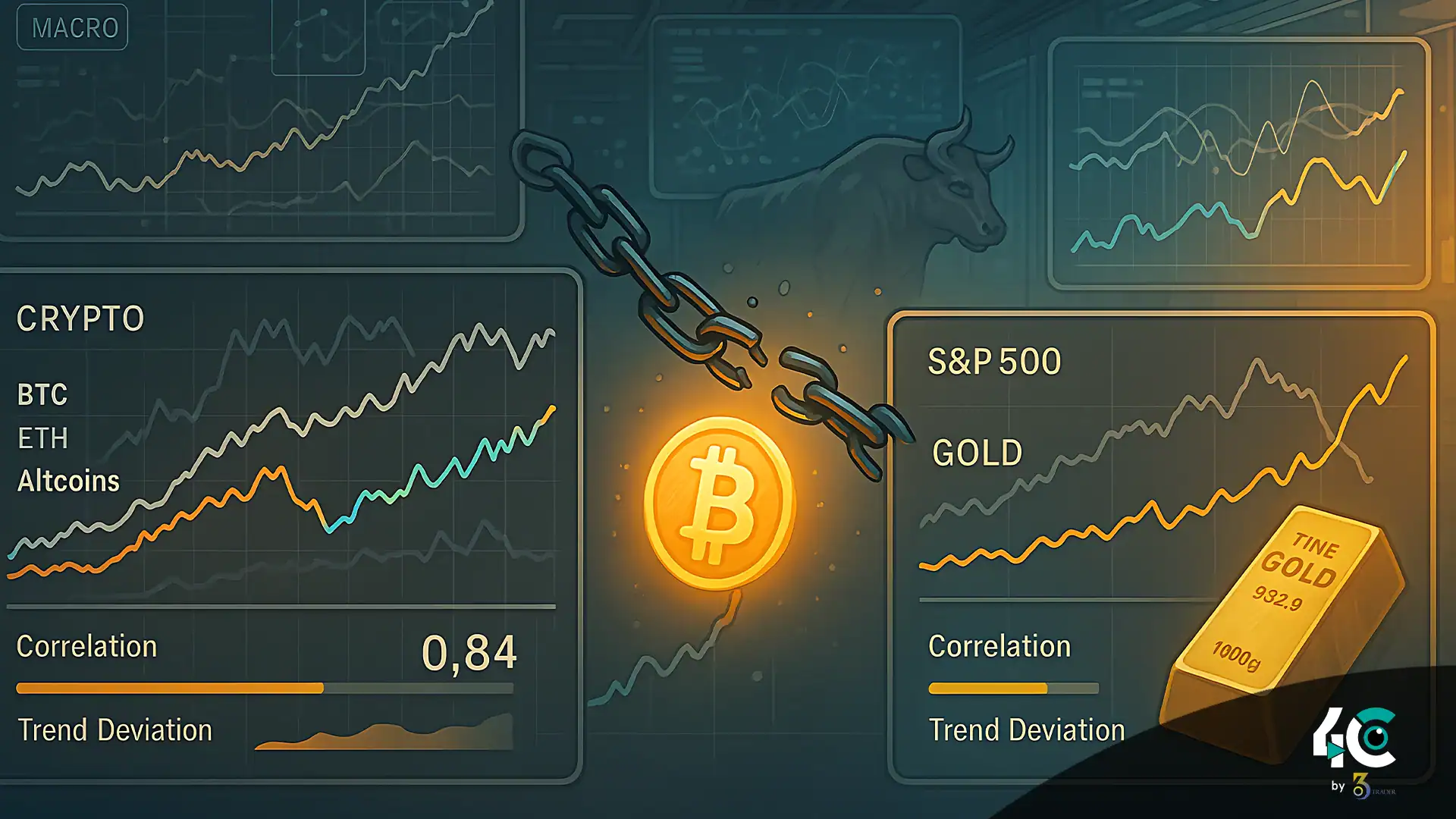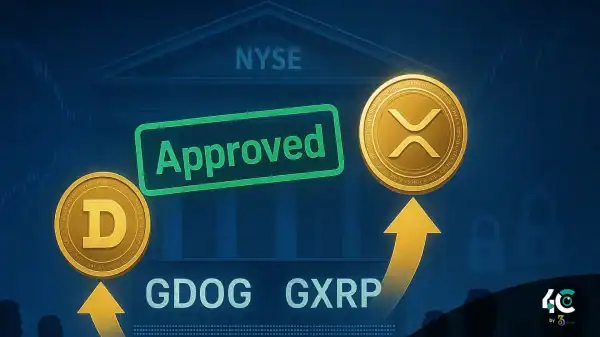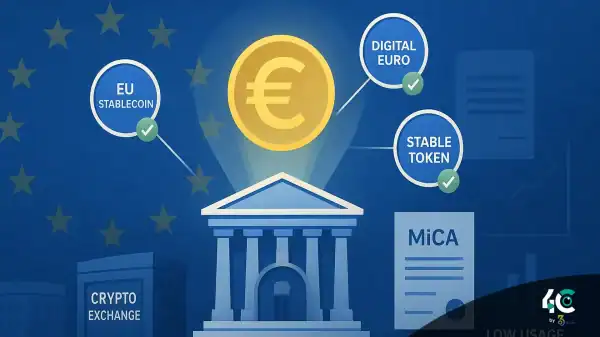A Brief History of Bitcoin’s Importance and Macro Desires
In the past, crypto has acted like a normal asset.
The price fluctuations of bitcoin and altcoins in 2017–2018 had little correlation with stocks or gold.
Between 2020 and 2022, the institutional investment surge has made bitcoin more correlated with the NASDAQ in risk-on/risk-off cycles.
Macro conditions like interest rates and inflation dominated the headlines starting 2023. A more interesting question brought up was: Is Bitcoin regaining digital gold status? Or is it simply following equities further?
To understand these changes, some recent data needs to be viewed to examine at what period the correlation coefficients changed.
Analyzing Correlation Trends
We investigated rolling 90-day correlation coefficients between Bitcoin and Ethereum and other major altcoins vs. NASDAQ Composite Index (Stocks) to see whether decoupling is happening.
Gold Futures Prices (Safe Haven Asset).
Key Findings
1. Bitcoin vs. NASDAQ
Prior to 2023, a risk-on bitcoin correlation with the NASDAQ varied from 0.6 and 0.8.
In Q1 2023, the correlation fell to the 0.2–0.4 range but further showed sensitivity to macroeconomic sentiment in spikes above 0.5 at the time of Federal Reserve announcements.
2. Bitcoin vs. Gold
Until 2023, the connection was low (0.1–0.3) apart from when BTC was jumping with gold at wars.
According to the revised data for 2023, Bitcoin’s correlation with Gold rose to 0.3–0.5 during the banking turmoil (for example, during the failure of Silicon Valley Bank in the US). Amidst the corollary regression of US equities, Bitcoin is recovering its role as a refuge for value (XRP).
3. Altcoins vs. Macro Assets
According to Bitcoin, Ethereum, Solana, and Cardano demonstrated either negligible or weak correlation to stocks and gold.
The correlation of Ethereum with NASDAQ (-0.4; +0.6) suggests that being a utility token, it is speculative.
Case Study: Recent Market Events
Event 1: Bank Crisis (March 2023)
Markets: Amid concerns of a systemic risk, Gold and Bitcoin surged while stocks tumbled.
Bitcoin’s correlation to NASDAQ moved close to zero, correlation analysis suggests. At the same time, the correlation with gold increased (for a short while) 0.5.
Rise in Interest Rate by Federal Reserve 2022–2023
The Bitcoin rise was sharper compared to stock and crypto reaction to tighter monetary policy.
Stock returns went higher after gains, and vice-versa!
April 2023 saw the Shanghai upgrade for Ethereum.
The protocol had specific reasons that drove the Ethereum rally this week.
Correlation analysis has made NASDAQ and ETH less correlated as their correlation value is drifting below 0.3.
Is Decoupling Real?
Our evidence analysis finds that partial decoupling is in place.
The present correlations often spike due to major events (Fed meetings, banking crisis and the likes). This suggests that they are still part of the macro set-up.
Implications for Investors
For Traders
It can be seen that short correlations are still existent. Be in place during macro-sensitive events.
Technical indicators can help in tough situations.
For Long-Term Investors
Think about adding Bitcoin to a diversified portfolio. Bitcoin is being used by many investors as a hedge. Many experts believe its links with gold have strengthened for performing this function.
It’s better to evaluate altcoins on the basis of their utility and ecosystem growth than on macro trends.
For Analysts
Keep a regular eye on rolling correlation figures.
Take into consideration the unusual risks (such as regulatory changes and protocol upgrades) which can overshadow the larger economic environment.
Final Thoughts: Toward Greater Independence
It might sound nice to say there’s a full decoupling, but that’s not true. Bitcoin is identified as either a digital gold or a risk asset, while altcoins are increasingly decoupling, according to a claim by David Puell. This development suggests that as the crypto market matures, external factors won’t matter and internal fundamentals take centre stage.
As cryptocurrencies age, the correlation of crypto products may differ from the current one. Some call it independence. Others say it’s just more complex. Whether you’re talking crypto or any other macro asset, ‘zero interest’ certainly isn’t static.
Conclusion
According to a data analysis report, Bitcoin and top altcoins are only somewhat dependent on stocks, gold, and other assets. Although many events correlate in the short term with a big impact, it’s the other way around in the longer term. These same events cease to be correlated with any macroeconomic factors. Bitcoin behavior continues to appear more hybrid, in nature, with strong correlations with gold as well as equities. Meanwhile, the altcoins have become increasingly independent and are driven by developments related to the respective protocol. The results suggest that the crypto is becoming an asset class but some macro sensitivities remain.


































